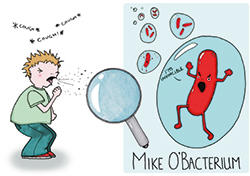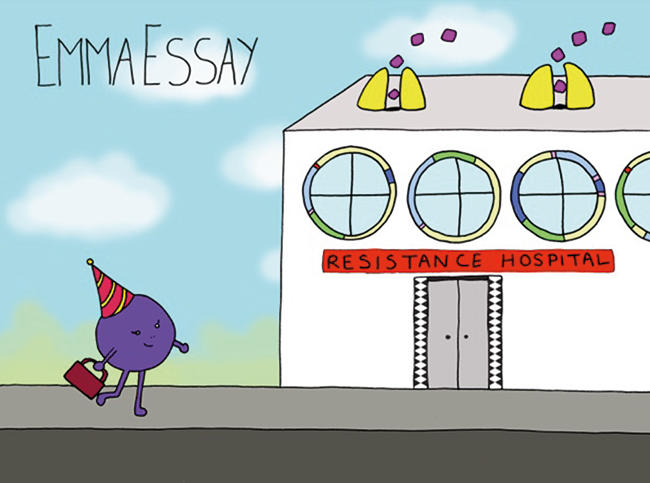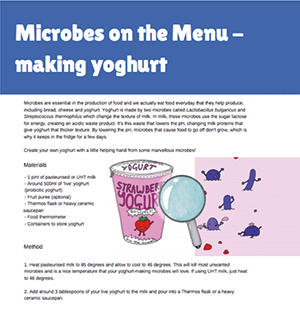Schoolzone: Meet the Microbes
08 August 2017

Society member, Naomi Chant, has written an e-Book to introduce the public to the world of microbiology and the microbes that surround us. Below, in her words, she tells us about the book and how she came to develop such an interesting resource.
Meet the Microbes is an e-Book aimed towards young readers (Key Stage 3), giving them an introduction to the weird and wonderful world of microbiology. Starting with Louis Pasteur and his discovery of germs, Meet the Microbes takes readers on the journey of learning about the good and the bad microbes that we live with everyday.

The book is an outcome of I’m a Scientist, get me out of here!, a science outreach event where students interact with scientists, voting for their favourite to win a cash prize to communicate their science to the public. Over two weeks, students aged 12–18 could ask any question they wanted in live chat rooms. It was a fantastic form of interaction as the students were more candid than in the classroom, and, as a result, I got insight into their knowledge gap when it came to microbiology and what they wanted to know about microbes.
The questions the students asked, such as “How big are bacteria?” and “What do they look like?”, inspired me to produce a resource that would provide the answers in an accessible format that could be used by people at home and in the classroom. I decided to make an e-Book available online that featured microbial characters and covered important microbiological topics using colourful illustrations with the thanks of the talented artist Immy Smith.
The microbes that feature in the book have names that are easier to remember than their scientific names, and I wanted them to be distinct based on what they look like (such as their colour representing their Gram stain), where they live or what they do, rather than a generic nasty-looking bug that you sometimes see. Characters in the book include menacing and mischievous microbes that cause infections, such as Mike O’Bacterium (Mycobacterium tuberculosis), as well as the marvelous and magnificent ones, such as Luke Onostock (Leuconostoc mesenteroides), that do helpful things such as making food and cleaning up hazardous waste.


Using colourful illustrations, important concepts such as taxonomy, antibiotic resistance and infection control are covered, incorporating techniques such as mnemonics to aid remembering classification of microbes, something that I learnt in school and still find useful now. Readers can also become microbiologists themselves by carrying out experiments throughout the book. From growing their own microbes to identifying the source of an epidemic, the experiments in the book give a taste of jobs that microbiologists do in the real world and can be used as tools to promote microbiology in the classroom, using just a few simple materials.
Despite a large number of the characters in the book being bad microbes, they make up a tiny fraction of the micro-organisms that surround us all the time and it is the majority that keep us healthy, help our ecosystem and make some of the foods that we eat – this is the take-home message from Meet the Microbes, and I hope that the more people that read the book will become enthused about the wonderful world of microbes.
Printable experiment handouts can also be found in the teacher resources section of the website.
Naomi Chant
Meet the Microbes
@naomi_chant
Images: Two of the microbial characters from the book, Mike O'Bacterium (M. tuberculosis) and Emma Essay (meticillin-resistant Staphylococcus aureus, MRSA). Microbes on the Menu – Making Yoghurt, one of the experiments in Meet the Microbes. All Immy Smith.


